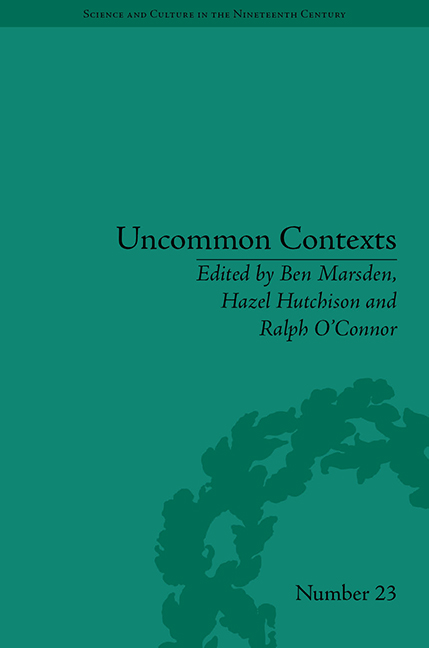Book contents
- Frontmatter
- Contents
- Acknowledgements
- List of Contributors
- List of Figures
- Introduction
- I Literary Genres of Science Writing
- 1 The Experimental Novel and the Literature of Physiology
- 2 An Active Nature: Robert Hunt and the Genres of Science Writing
- 3 Hyena-Hunting and Byron-Bashing in the Old North: William Buckland, Geological Verse and the Radical Threat
- II Pushing the Boundaries of ‘Literature and Science’
- Part III Science and Technology in Fiction
- Notes
- Index
3 - Hyena-Hunting and Byron-Bashing in the Old North: William Buckland, Geological Verse and the Radical Threat
from I - Literary Genres of Science Writing
- Frontmatter
- Contents
- Acknowledgements
- List of Contributors
- List of Figures
- Introduction
- I Literary Genres of Science Writing
- 1 The Experimental Novel and the Literature of Physiology
- 2 An Active Nature: Robert Hunt and the Genres of Science Writing
- 3 Hyena-Hunting and Byron-Bashing in the Old North: William Buckland, Geological Verse and the Radical Threat
- II Pushing the Boundaries of ‘Literature and Science’
- Part III Science and Technology in Fiction
- Notes
- Index
Summary
The engagement between scientific practices and literary forms in the nineteenth century is typically studied in terms of published writings, from the rhetorical techniques of scientific papers and the poetics of popularization to the scientific content of famous novels or poems. However, the majority of poems composed in nineteenth-century Britain were never published, but formed part of a largely uncharted world of private circulation, surviving (if we are lucky) in albums, diaries, commonplace-books or archives, and only rarely emerging in book form. Among the gentility, such practices had a distinguished pedigree: humorous epigrams and occasional poems had long served as a mark of cultured conviviality, functioning as a socially acceptable medium for critique, debate, or jockeying for status. As classical education spread into the middle classes and the mixed culture of Regency and early Victorian drawing-rooms, this practice spread with it, adapting to its new social contexts and persisting in the face of print culture's meteoric rise. In the early nineteenth century, these largely humorous compositions (like other informal utterances and representations shared within an intimate circle, such as jokes and caricatures) served to amuse, cement social norms and reinforce group coherence.
Occasional verses on scientific topics were not merely trivial, especially those produced in the early nineteenth century when the social norms of science were undergoing rapid transformation and group coherence could no longer be taken for granted.
- Type
- Chapter
- Information
- Uncommon ContextsEncounters between Science and Literature, 1800–1914, pp. 55 - 82Publisher: Pickering & ChattoFirst published in: 2014



